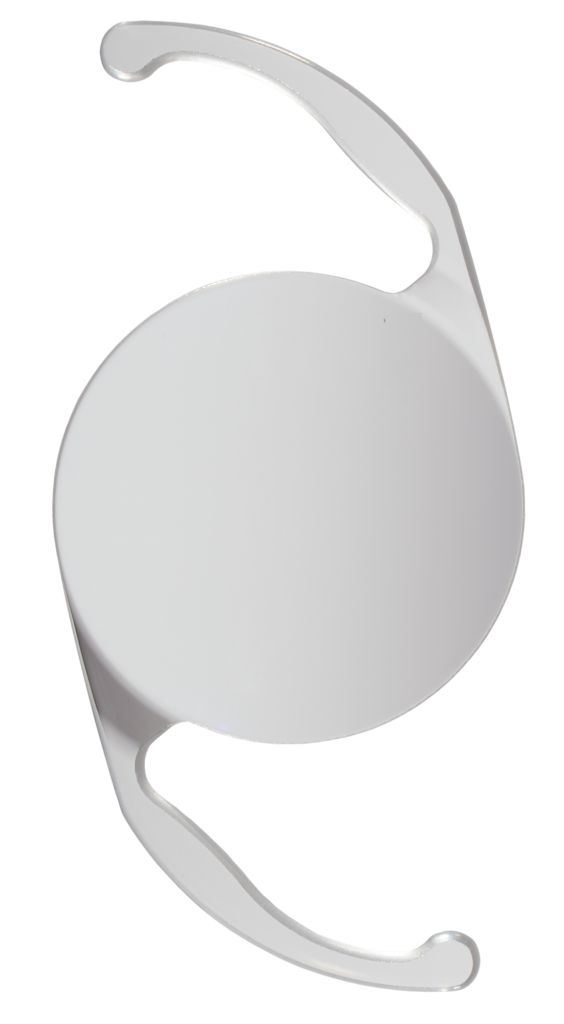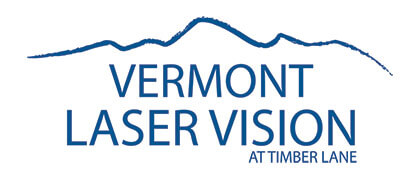
What is an Artificial Lens or Intraocular Lens (IOL)?
During cataract surgery the eye’s natural, cloudy lens is removed and replaced with a clear, artificial lens. The artificial lens is made of acrylic, silicone, or other plastic material. These lenses are available in different focusing powers, just like glasses. During the preoperative consultation, sophisticated measurements are taken of the eye to determine the lens power. At the time of the consultation, you and your surgeon will decide what lens option is best given the unique shape of your eye and your postoperative goals.
Types of Lenses
Monofocal
Single Focus Lens Implant
The standard, monofocal lens has a successful track record. This type of lens has a fixed focal length which allows the eye to focus in one of three zones: near (when reading and using the phone), intermediate (when working on the computer), or distance (when driving or watching TV). Many patients elect clear distance vision without glasses, but near vision target is also an option. The best postoperative visual outcome will be achieved with the use of glasses to bring all three focal distances into focus. The cost of a standard monofocal lens is covered by Medicare and most commercial insurances. A monofocal lens does not correct astigmatism. Patients with astigmatism may consider a Toric lens.
Toric
Astigmatism Correction Lens Implant
A Toric artificial lens is used to minimize or eliminate astigmatism, allowing patients to have improved uncorrected vision after cataract surgery. Patients who have corneal astigmatism will see better without glasses if they select the Toric artificial lens compared to the standard monofocal artificial lens. There is no significant added risk to cataract surgery when using the Toric artificial lens. The Toric lens is an upgrade and has associated out-of-pocket costs.
Presbyopia Correcting Lens Implants
Multifocal
Multifocal & Trifocal Lens Implant
Multifocal and Trifocal lens technology has made huge strides over the past few years. The These premium lenses are made with innovative technology that allow the eye to focus at near, intermediate, and far distances. The resulting multifocality minimizes the need for trifocal glasses after cataract surgery. Trifocal lenses split light in a way that can cause halos around lights at night. Most patients report that this side-effect fades with time. Our surgeons will complete a comprehensive evaluation of your eye health and discuss your postoperative goals to determine if a Multifocal lens is the right choice. Most multifocal and trifocal lenses are available as Toric (astigmatism correcting) artificial lens. Multifocal and Trifocal artificial lenses are an upgrade and have associated out-of-pocket costs.
EDOF
Extended Depth of Focus
Extended Depth of Focus (EDOF) lenses stretch light instead of splitting it. This technology, when compared to multifocal artificial lenses, reduces glare halos at night. EDOF lenses deliver enhanced range of vision. Patients report monofocal quality distance vision, excellent intermediate vision, and enhanced near vision. Most patients still need reading glasses for small print, or in low lighting conditions. Many EDOF lenses are also available with Toric (astigmatism correcting) options. EDOF lenses have associated out-of-pocket costs.


